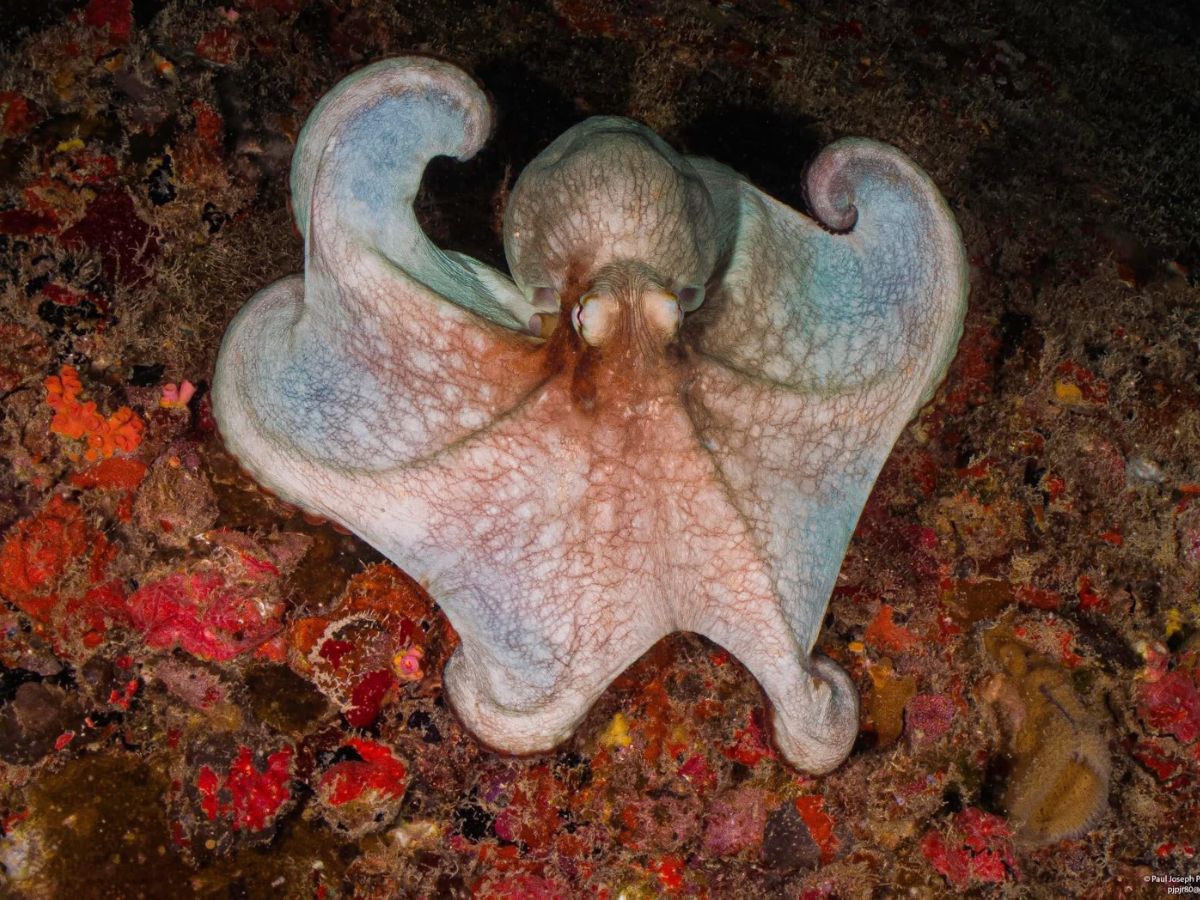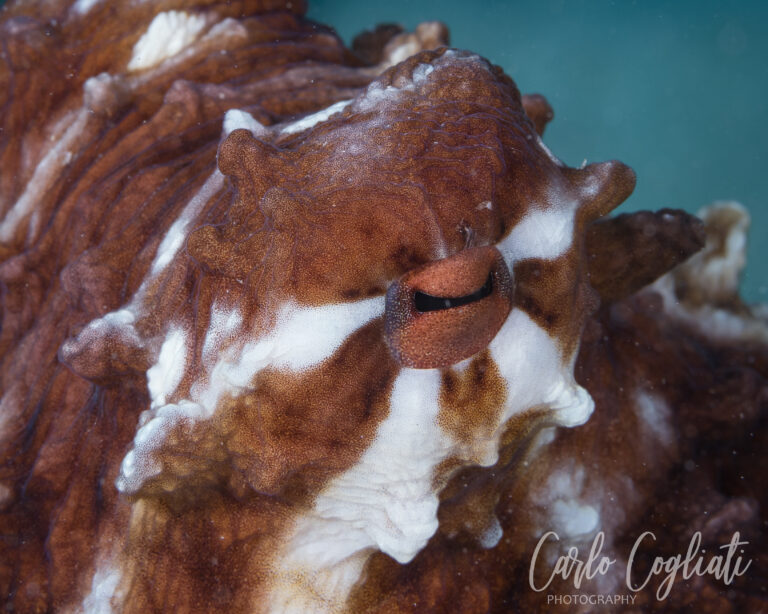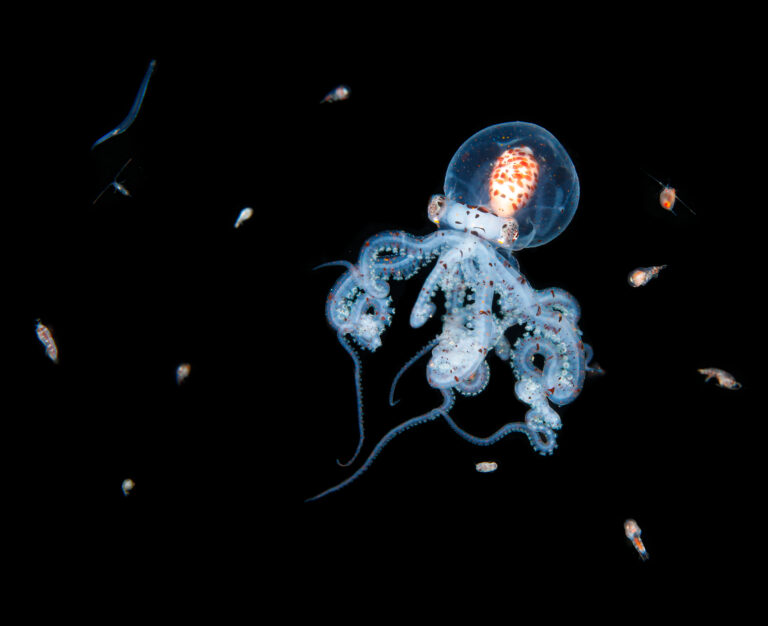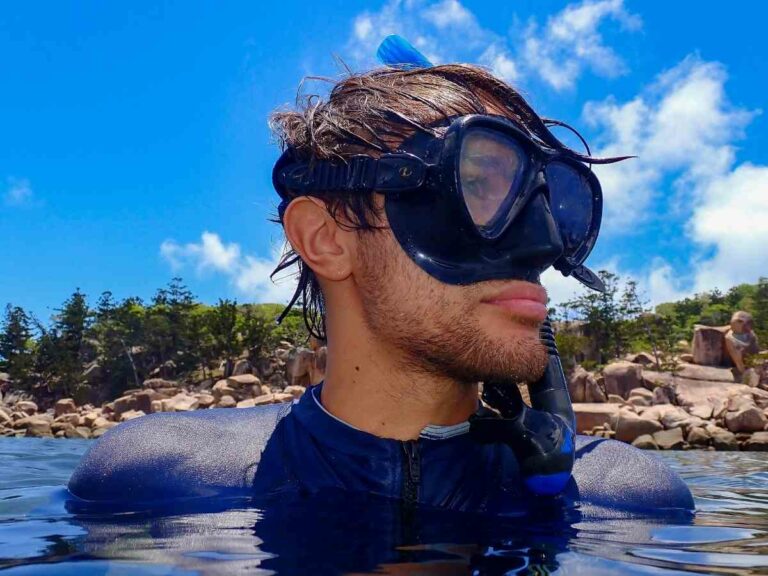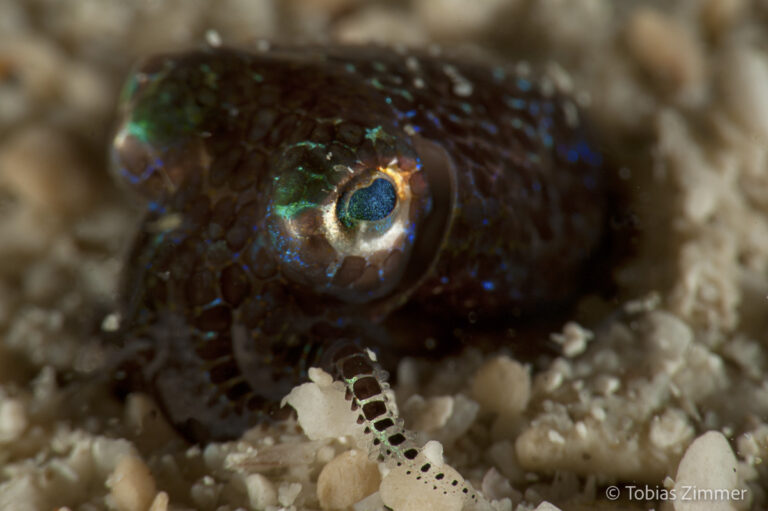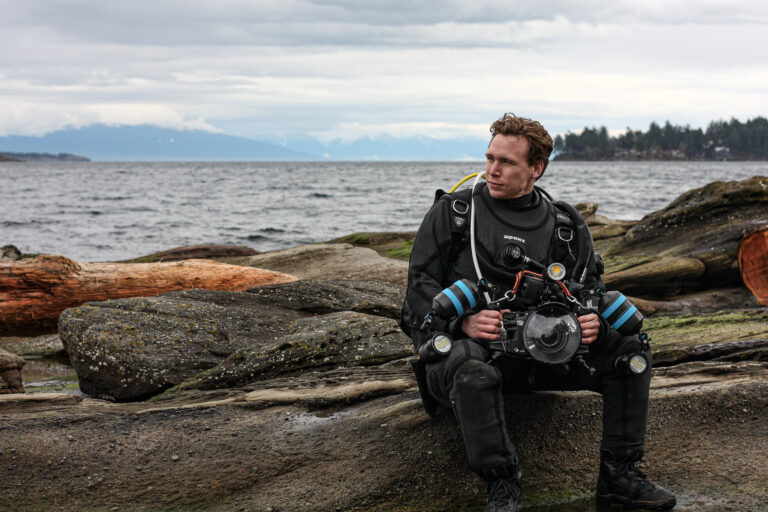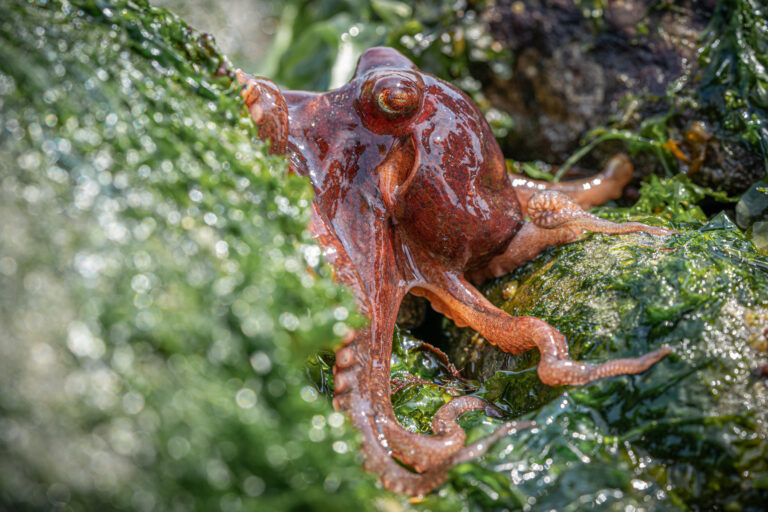‘Cephalotography’ Of The Week: Paul Joseph Prudhomme
Howdy Nation! In today’s post, we are going to be featuring our ‘Photographer Spotlight’ of the week: Paul Joseph Prudhomme. A certified underwater scuba diver, Paul has recently expanded his underwater adventures to include underwater photography. Diving off South Florida and into the Caribbean has given him so many new opportunities. Let’s take a close look at his work and hear a bit more about him.
All photos provided by: Paul Joseph Prudhomme
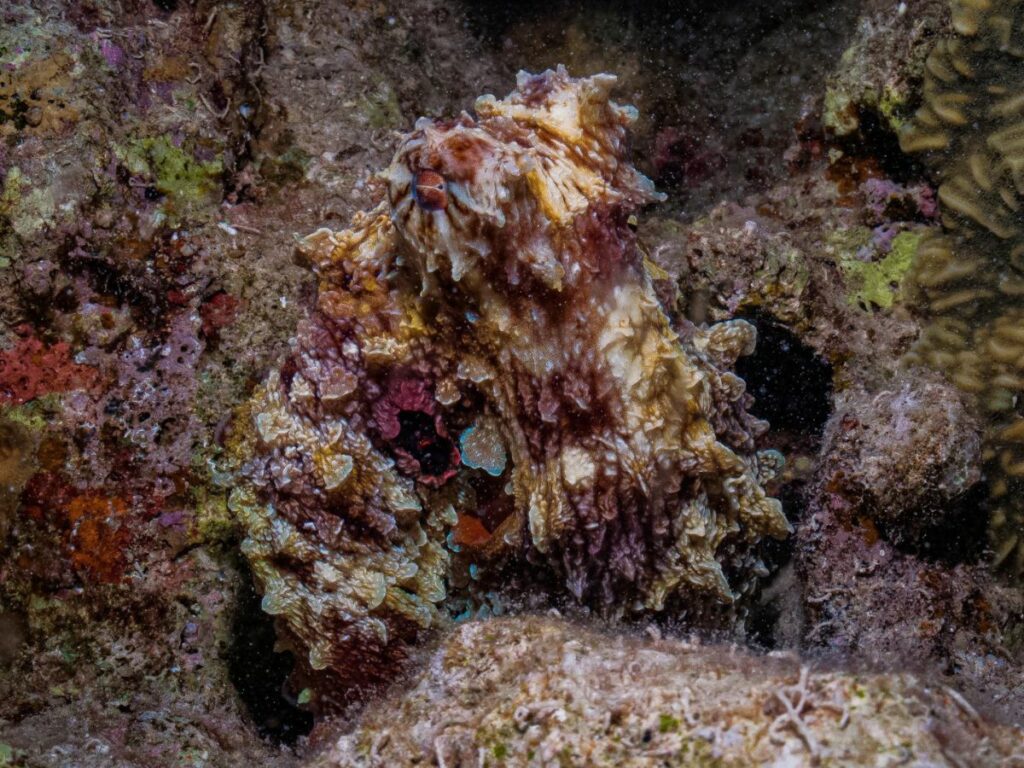
How long have you been an underwater photographer? How did you get started?
“I got a cheap underwater action camera in 2017. I soon realized that I would need more sophisticated equipment to achieve the degree of quality that I sought in my images.
I bought a SeaLife DC2000 in 2018 and first used it on a trip to the Philippines that year. Anilao in particular, which is famous for underwater macro photography, got me hooked!
I still have that same camera but have been adding lighting, lenses, and other elements to my rig since then.”
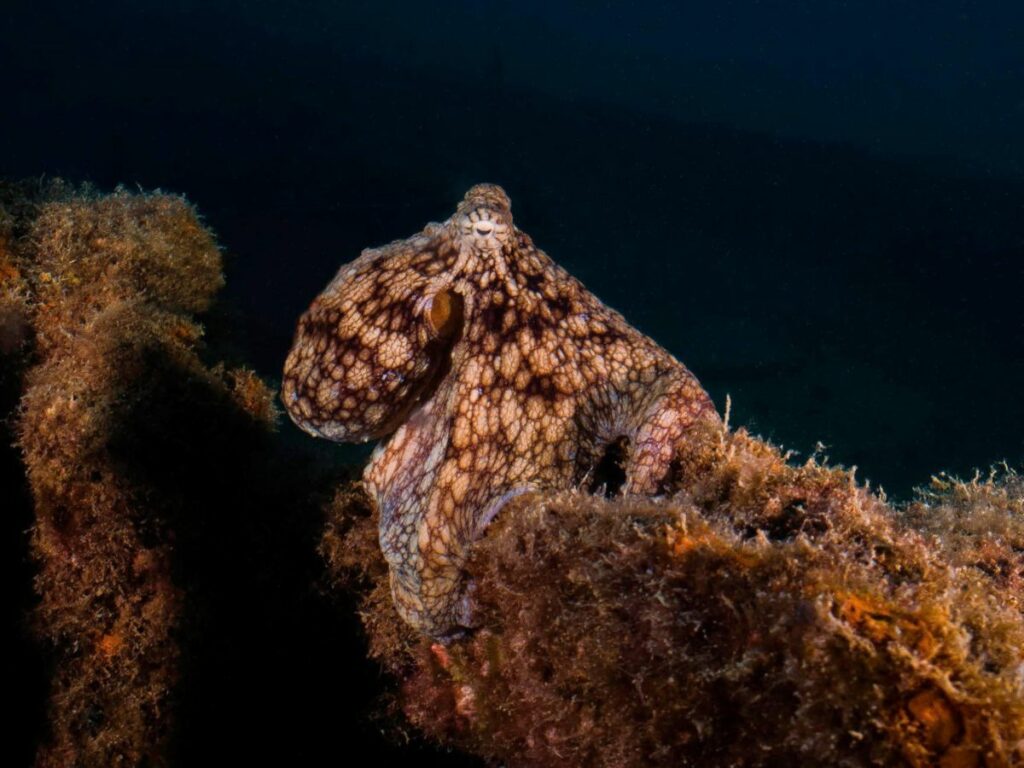
What draws you in or fascinates you the most about the octopus?
Octopuses and other cephalopods are so fascinating that it is hard to narrow it down to just one thing. Their intelligence and curiosity becomes clear if and when you are lucky enough to have an extended encounter with one.
Their camouflage often makes them harder to find, so you feel lucky when you find one! Their ability to change the color and texture of their skin is amazing to watch but difficult to capture in still images; maybe video is a better option.
The variety of cephalopod species also provides opportunities for encounters with species that you have not seen yet; the Giant Pacific Octopus is high on my bucket list!”
Where do you mainly dive and take underwater photos? How often do you go?
“Since moving to South Florida, I dive locally on weekends whenever the weather permits and the charter boats schedule suits my preferences. I also travel internationally in order to dive.
Much of my earlier dive travel was in the Caribbean, but I have since shifted my focus to Indo-Pacific destinations, such as the Philippines, the Red Sea, and the Sea of Cortez.”
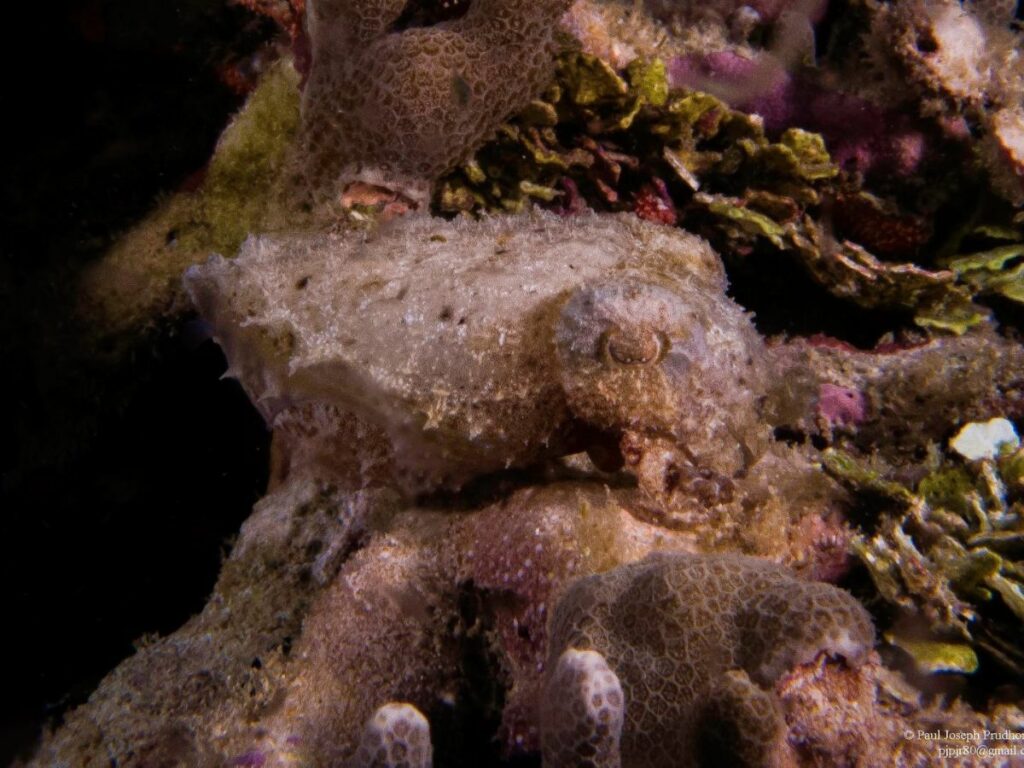
What are the unique challenges you face when photographing cephalopods compared to other marine life, given their incredible camouflage and quick movements?
“The first challenge is finding them, which can be hard because of their camouflage, their often nocturnal lifestyles, and their habit of hiding in tight spaces. A good guide can help with that challenge! The guides in the Philippines in particular have a remarkable eye for spotting such creatures.
The second challenge is to avoid scaring them. They seem to recognize that you have spotted them, which may put them in a defensive mindset because they have lost their primary advantage (camouflage). I have found that slow movements are less likely to scare them.
The third challenge is their sensitivity to light. Continuous lighting, such as torches or video lights, may irritate them and cause them to flee or hide. Strobe flashes are usually not that disturbing to them, but at night (when they are most active) it is necessary to have a continuous light source for the camera to focus. My solution to that problem is to use a red focus light that turns off automatically when the strobe fires. They cannot see red because it does not exist at depth, so the focus light does not bother them.
The fourth challenge is capturing their ability to change the color and texture of their skin. The ideal way to capture that is on video, for which one should use video lights. But, continuous video lighting runs the risk of irritating them. So I usually shoot still images instead.”
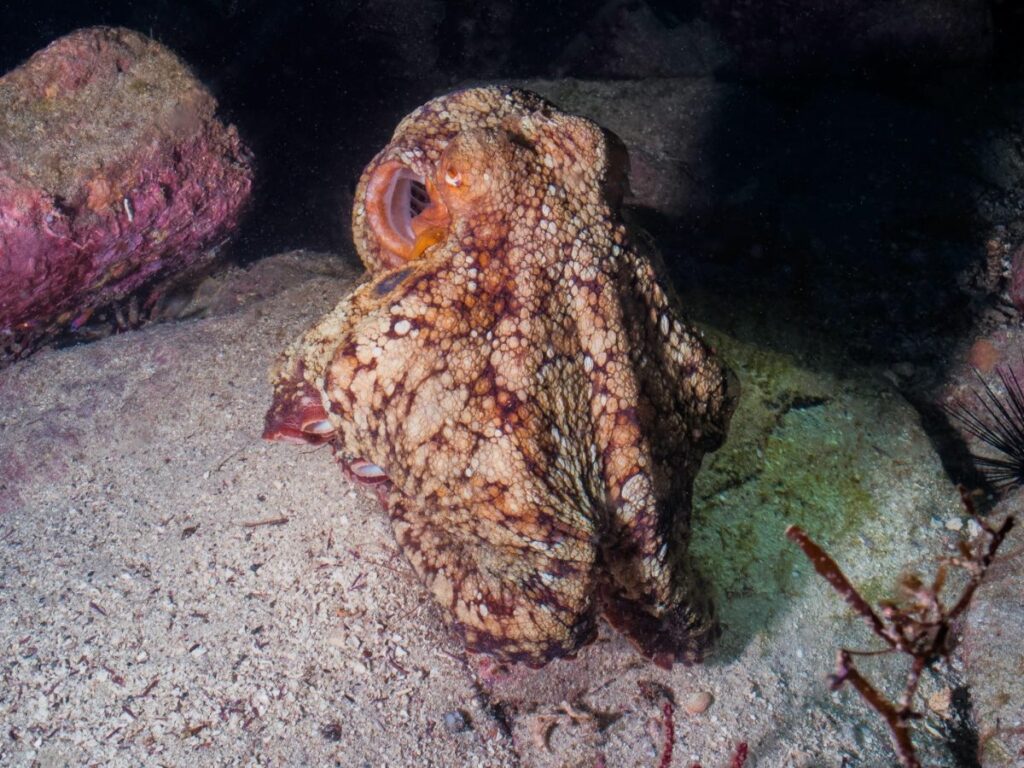
What equipment and techniques do you use to obtain epic, high-quality images of cephalopods in their underwater environment, given the challenging lighting conditions and their elusive nature?
“I use a SeaLife DC2000 camera. I shoot in Manual mode to ensure optimal exposure and depth of field. I shoot in the RAW image format to give me more creative control over post-processing.
I use two Sea Dragon strobes on arms to illuminate still images and a Sea Dragon 5000 video light on the camera’s hot shoe to illuminate video. The Sea Dragon 5000 video light has a red focus light feature that enables the camera to focus at night without disturbing light-sensitive nocturnal animals, such as octopuses and other cephalopods.
They cannot see red because it does not exist at depth, so it does not bother them.”
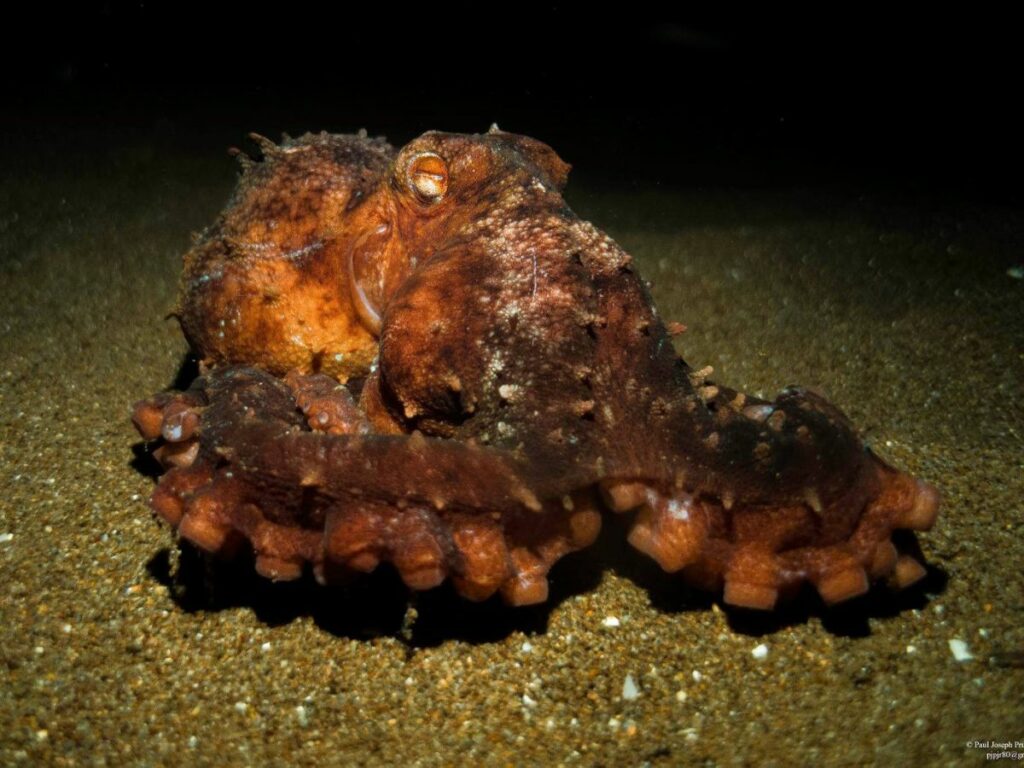
Cephalopods are known for their intelligence and problem-solving abilities. Have you had any notable interactions with them that showcase these traits?
“I have seen several octopus’ express what appeared to be curiosity about my camera equipment. They seemed to be interested in the arms of my camera rig (maybe they thought it was another octopus?) and also in their own reflections in my dome lens.
Supposedly an animal is self-aware if it can recognize itself in a mirror or other reflective surface. It was not clear to me if they recognized themselves or thought that they were seeing another octopus.”
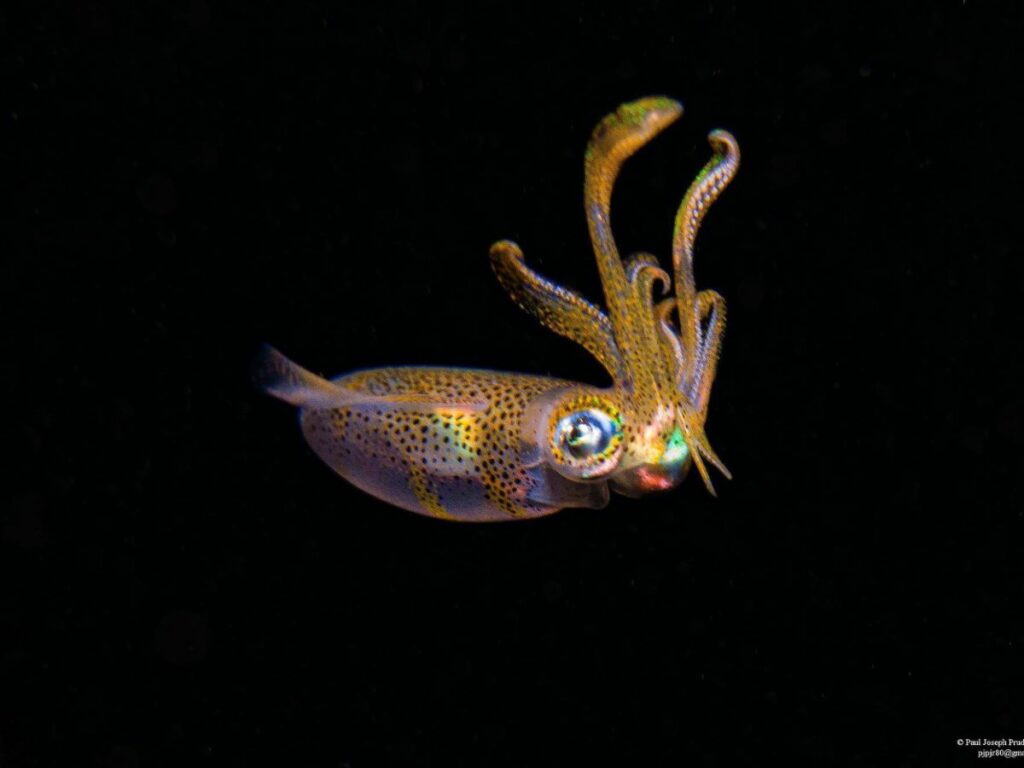
How do you ensure that your presence does not disturb or negatively impact your subjects and their natural environment during your photography sessions?
“I maintain good buoyancy control, which is a critical skill for any scuba diver, regardless of whether or not they are using a camera. I avoid or at least minimize contact with the bottom, e.g. balancing myself in position with one finger rather than resting my whole body on the bottom.
I move slowly when approaching potentially shy animals, including octopuses. In the case of octopus and other light-sensitive nocturnal animals, I try to minimize their exposure to white light.
During night dives, I use torches on their lowest setting. I also use red focus lighting to minimize the impact of shooting still images at night. I generally do not shoot video of octopus at night (which would require potentially disturbing continuous white light), unless I sense that it is curious or interested enough in our interaction to remain despite the lighting.”
Who (or what) are your biggest influences?
“I view and try to emulate the images of other underwater photographers on social media. I also try to learn from the feedback that I receive from my own social media followers, in the form of likes, comments, and shares.
Some images generate a lot more interest than others, which tells me that something about them (the subject, the composition, etc.) resonated with viewers and might be worth doing more of in the future.
For example, my octopus images usually generate an above-average (for me) amount of likes, comments, and shares, compared to images of other animals.”
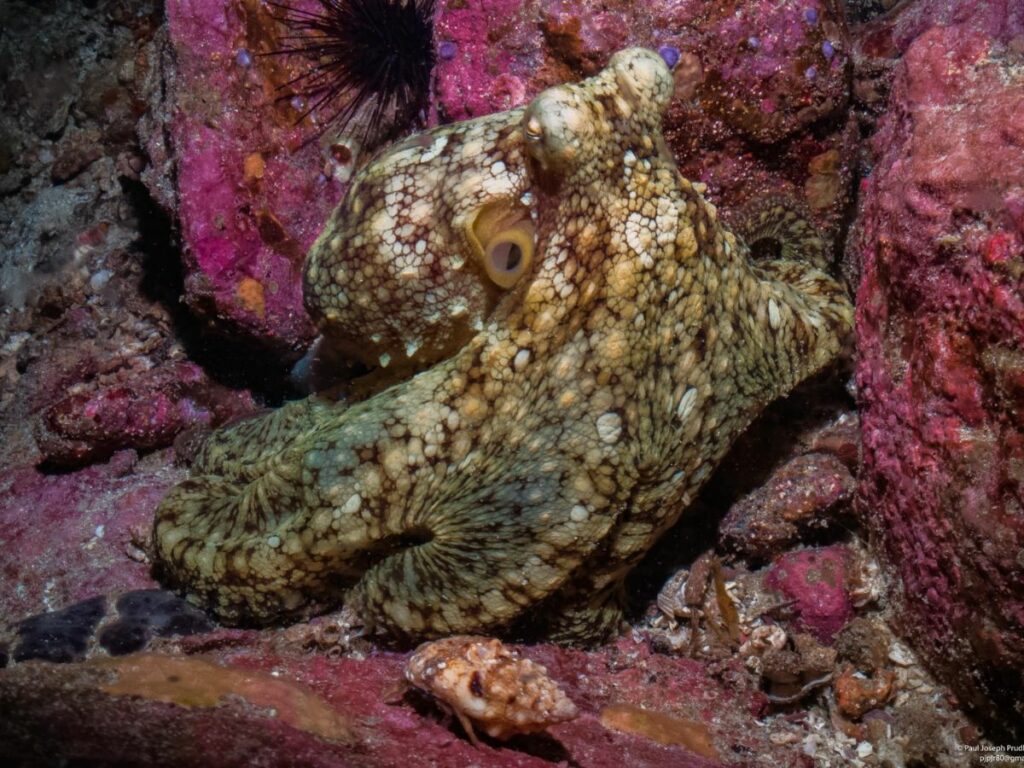
What advice would you give to aspiring underwater photographers who want to explore the world of cephalopods and capture their remarkable beauty?
“Do as many night dives as possible! So many cephalopods are nocturnal that you have a much better chance of encountering them at night. And, when do you find them at night, try to minimize their exposure to white light; ideally, use a red focus light for still images.
Go to Indo-Pacific destinations as frequently as possible. The cephalopods are more numerous and diverse there than in the Caribbean. The Philippines and Indonesia are probably your best bets, specifically places like Anilao and Lembeh, which are famous for macro photography of small, exotic creatures.”
What’s your most memorable underwater photoshoot?
“My most memorable shooting experience was with the manta rays of Socorro, Mexico. They deliberately swim over divers in order to take “bubble baths” in the regulator exhaust that divers exhale.
They either use our bubbles to remove parasites or simply find it enjoyable. This interaction provided great photo opportunities and gave me a sense of their intelligence; they have the highest brain:body ratio of any fish.”
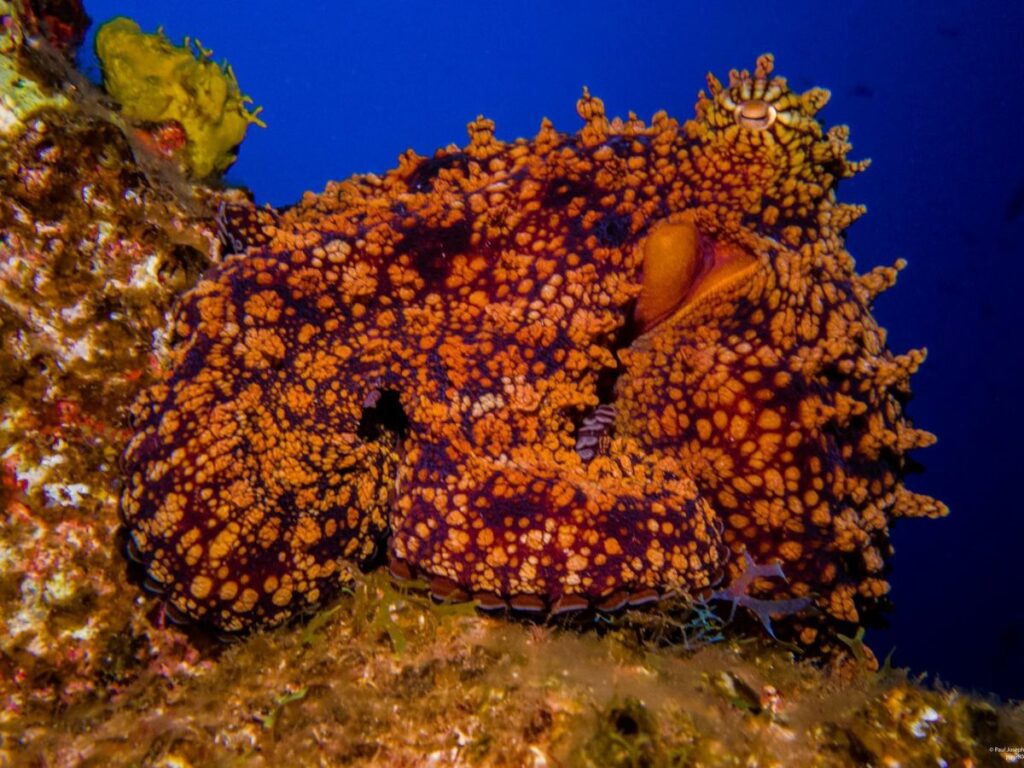
Are there any particular species of cephalopods that are on your bucket list to photograph?
“The Giant Pacific Octopus is high on my bucket list. They live in cold water in the Pacific Northwest. I hope to do more cold water diving in the future.”
What’s the best place for people to discover your work (website, social media)?
“My Instagram account is @paul_images. My Facebook page is Florida Man Underwater Photography.”
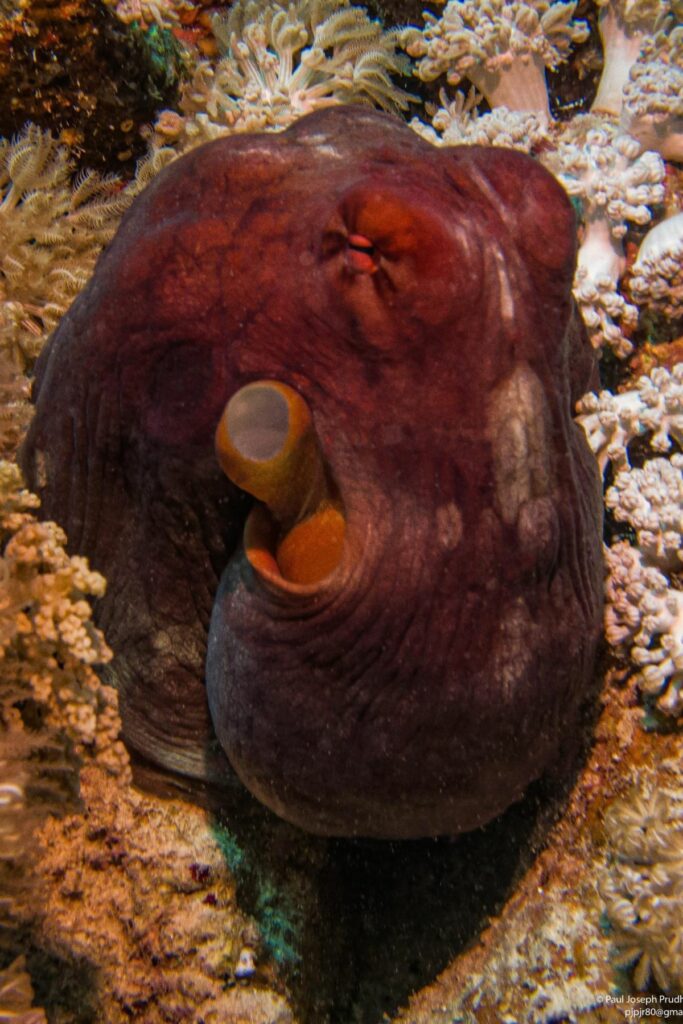
Thank You For Joining Us For Photographer Spotlight!
First, we want to give a big thank you to Paul Joseph Prudhomme for allowing us to showcase his beautiful photography on OctoNation. To continue supporting Paul and his underwater photography, make sure to follow them on Instagram and on Facebook.
If you want to educate yourself some more about all sorts of different cephalopods, take a look at our encyclopedia. Or, what we call it, our Octopedia!
Connect with other octopus lovers via the OctoNation Facebook group, OctopusFanClub.com! Make sure to follow us on Facebook and Instagram to keep up to date with the conservation, education, and ongoing research of cephalopods.
More Posts To Read:
- ‘Cephalotography’ Of The Week: Tobias Zimmer
- ‘Cephalotography’ Of The Week: Paul Joseph Prudhomme
- ‘Cephalotography’ Of The Week: Matt Testoni
- ‘Cephalotography’ Of The Week: Lawrence Scheele
- ‘Cephalotography’ Of The Week: Kat Zhou
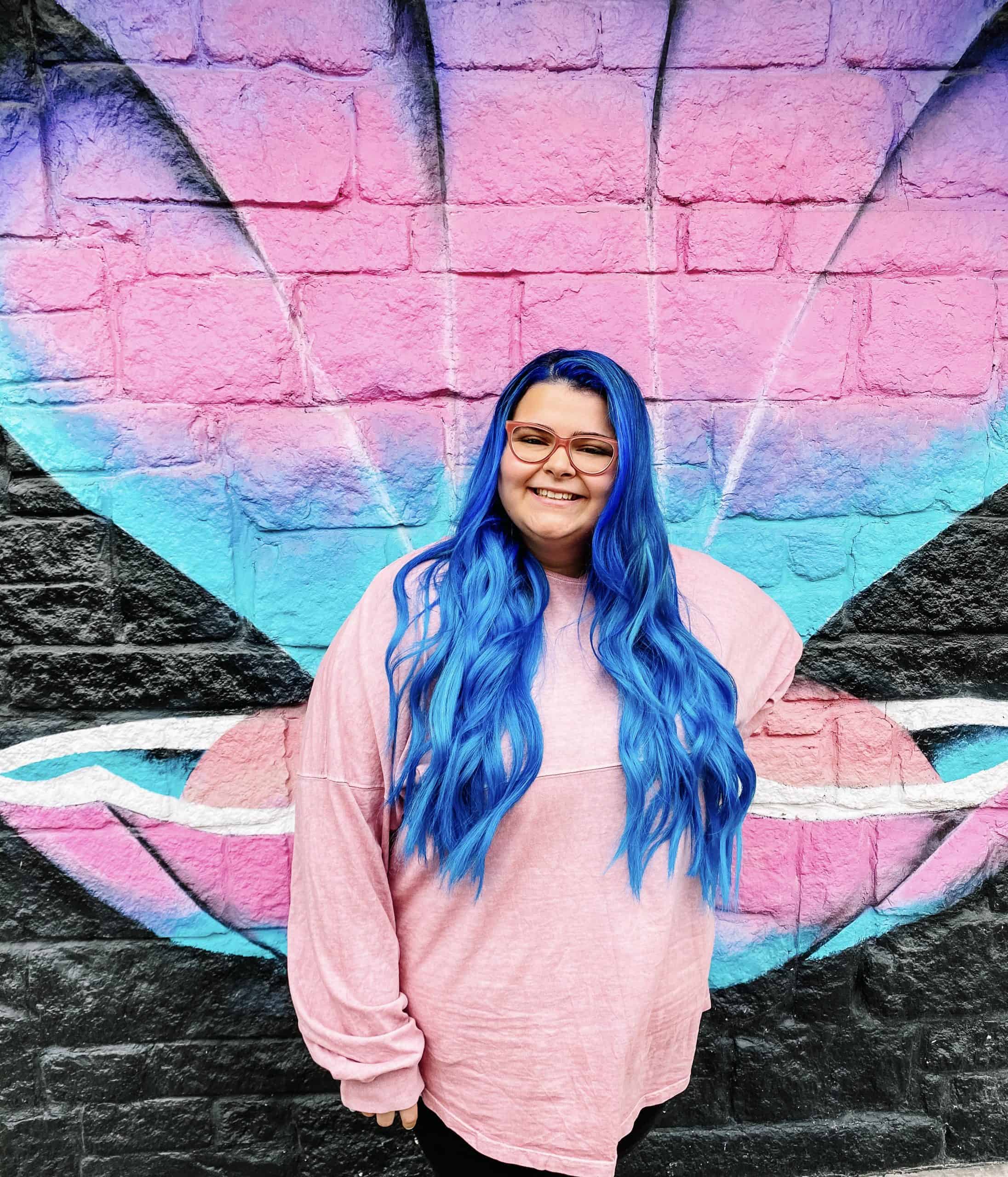
Vee is the blog manager here at OctoNation. Her love and knowledge for all things cephalopods has grown immensely since joining the OctoNation team- and continues to grow daily!
Vee uses her skills of writing, editing, and brainstorming to help create fun, yet educational posts about cephalopods- Something everyone can read and enjoy! As someone who spent the better part of her childhood near the ocean in Miami, Florida, she grew up learning to appreciate all sea life. Her love for the sea inspired her to do something daring- she dyed her hair blue!
